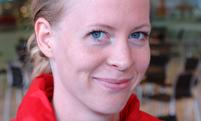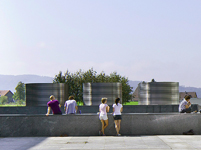Future Cities (2013)

Future Cities (2013): at the Singapore-ETH Centre for Global Environmental Sustainability (SEC) in Singapore
June 24 to July 12
Background
The Global South will be the locus of urban growth in the 21st century. It has to navigate a new path to build new economically productive, energetically efficient and environmentally healthy cities and urban agglomerations for their growing populations. A new path is needed as the existing models, grammars and visions of the Global North were developed and tested over long time periods for other population densities, other growth speeds and other climates.
What is currently missing are not insights into the design of individual buildings, but grammars to build and design cities and urban areas incrementally. These urban grammars for both the urban structure as well as the networks are at the centre of this summer school. The students have developped and experimented with their newly developed rules for the master planning of a new town of 100'000 residents, including the physical design, its impact on the daily life of the inhabitants, its energy balance and economy.
Singapore is the ideal backdrop for such a design studio, as it has been built with a very strong urban grammar of its own and as it has extensive experience of providing housing to its fast growing population. Still, it is not clear, if its example can simply be exported, if it does not need rethinking for other places and different socio-economic conditions in the Global South.
Outline
The students? task was to develop a design grammar for the new town, i.e. a system of buildings, ratios of uses, rules for network design (junction types, grid dimensions, type of network, etc.). Further, they were asked to assess the city qualitatively in all three dimensions of sustainability using the available evidence in the literature. Tools were introduced to generate the new town virtually to obtain a large-scale impression of the impact of the rules.
The participants received inputs via lectures and workshops in all relevant fields by both local and international experts and also work individually in smaller groups on specific case studies (urban design and network design). The program was accompanied by excursions and site visits.
Learning objectives were to:
- Deepen the understand of urban design, city planning, network design, network optimisation, job and housing balance
- Learn working in interdisciplinary and intercultural teams
- Apply creative technologies in solution finding processes
- Get hand?s on experience by applying knowledge in concrete case studies
A strong team
The "Future Cities? summer school program was organised in collaboration between ETH Sustainability, the central hub for coordinating sustainability activities at ETH Zurich, the Department of Civil, Environmental and Geomatic Engineering (D-BAUG) and the interdisciplinary research programme "Future Cities Laboratory? (FCL) of the Singapore-ETH Centre for Global Environmental Sustainability (SEC).
Faculty
Input and support for the case studies was provided by selected experts who take a leading role in the field of urban and network structures as well as sustainable development. Among the summer school faculty were:?
Lecturers
- D Levinson, University of Minnesota – Urban networks structure and growth;Scale and productivity
- V Chua, NUS – The networked individual
- S Marshal, UCL – Urban network grammars
- KW Axhausen, ETH – Urban prices and demand estimation
- S Cairns, FCL – Urban Visions of 20th century
- Ng Yai Keen - Urban visions of Singapore since 1950s
- DH Lee, NUS – Transport tour of Singapore (to be confirmed)
- Menon Gobinath, NTU - Transport policy in Singapore: Past and present (to beconfirmed)
- G Schmitt – FCL Vision and programme
Crash courses
These courses introduced two crucial tools for the work envisaged:
- S. Müller-Arisona, FCL – Parameterical design and visualisation (G Ashwanden, FCL)
- B Vitins, ETH – Network optimisation and network grammars
Tutors for each of the five groups of six students
- KW Axhausen, ETH/FCL (A Erath, P Fourie)
- S Cairns, FCL (E Friedrich)
- A Lehnerer, ETH/FCL (J Macken, L Stieger,)
- D Hebel, ETH/FCL (Felix Heisel, Marta Wisniewska)
- M Topalovic, ETH/FCL (M Knu?sel)
Guest critics
- Fabio Gramacio, ETH/FCL (to be confirmed)
- Lai Choo Malony-Lee, NUS Real estate, Centre for Sustainable Asian Cities,Singapore
- Ng Yai Keen, NUS Architecture, Singapore
- Andres Sevstuk, SUTD, Singapore (to be confirmed)
About the articipants
The ETH Sustainability Summer School 2013 invited 29 Bachelor, Master and PhD students from a wide spread of nationalities and disciplines (e.g. architecture, engineering, environmental and social sciences, economics, mathematics and others relevant fields for the urban fabric). Applicants were selected according to their academic strength, creativity and technical-related expertise, and their dedication to solving humanity's grand challenges.









